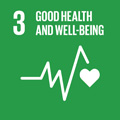- Docente: Maria Anna Vitiello
- Credits: 3
- Language: Italian
- Moduli: Maria Anna Vitiello (Modulo 1) Nicolò Schiavo (Modulo 2) Giorgia Errani (Modulo 3)
- Teaching Mode: Traditional lectures (Modulo 1) Traditional lectures (Modulo 2) Traditional lectures (Modulo 3)
- Campus: Bologna
- Corso: First cycle degree programme (L) in Physiotherapy (cod. 8476)
Learning outcomes
At the end of the module the student has the ability to apply knowledge and understanding in the orthopaedic-traumatological, rheumatological and neurological fields in the different phases of life. Knows how to practice clinical reasoning aimed at solving problems, continuously seeking opportunities for self-learning.
Course contents
MODULE 1-ORTHOPEDIC TRAUMATOLOGICAL LABORATORY (Prof.ssa Vitiello):
The three phases of rehabilitation: inflammatory, proliferative and remodeling.
The shoulder: clinical reasoning, evaluation and proposal of exercises for each rehabilitation phase The elbow: clinical reasoning, evaluation and proposal of exercises for each rehabilitation phase.
Wrist and hand: clinical reasoning, evaluation and proposal of exercises for each rehabilitation phase
Hip: clinical reasoning, evaluation and proposal of exercises for each rehabilitation phase
Knee: clinical reasoning, evaluation and proposal of exercises for each rehabilitation phase
Ankle and foot: clinical reasoning, evaluation and proposal of exercises for each rehabilitation phase
MODULE 2-NEUROLOGICAL LABORATORY (Prof.Schiavo):
Fundamental principles of clinical practice and clinical reasoning on the neurological patient
Bed work: therapeutic proposals divided by characteristics of the impairment, clinical reasoning and therapeutic proposals
The trunk: neurophysiological principles, clinical reasoning and therapeutic proposals practical laboratory: - activities for creating postural tone, postural orientation - exercises for anticipatory and adaptive activity of the trunk - the reactive activity of the trunk - the trunk in ADL
The path: biomechanical, kinematic and neurophysiological characteristics, clinical reasoning and therapeutic proposals. practical laboratory: - activities for the prerequisites of the journey - activities for the foot while walking - gait training - from the therapeutic journey to the social journey: the skills of the journey
The upper limb: biomechanical and functional characteristics, clinical reasoning and therapeutic proposals practical laboratory: - the postural activity of the arm - reaching activities - grasping activities - exercises for non-manipulative activities - manipulation activities - guiding in ADL
MODULE 3-DEVELOPMENTAL AGE WORKSHOP (Prof.ssa Errani):
Identify the needs of minors with rehabilitation needs, in reference to the physical, psycho-educational and social spheres, susceptible to physiotherapy treatment Collect, using appropriate documentation, anamnestic, physiological and pathological data relating to: structures, functions, activities and participation. Perform the objective examination through: observation, evaluation of mobility and investigation of signs and symptoms of the neuro-musculoskeletal structures, using documentation/physiotherapeutic tools and observation sheets for the child with neuromotor disorder. Analyze the data collected, identify the prevailing needs and objectives, agreeing them with the minor and/or his family. Hypothesize a physiotherapeutic diagnosis and the consequent physiotherapeutic prognosis. Define and plan the physiotherapy intervention, describe the setting and verify the achievement of the objectives. Illustration of clinical cases (practical demonstration of the assessment, identification of the main problem, therapeutic objectives and physiotherapy treatment) through videos or presentation of a case. Know the role of aids and orthoses dedicated to children, the principles for choosing and training in their use. Meaning of the process with botulinum toxin and surgery. Know the role of infant massage in supporting parenting and its basic principles.
Readings/Bibliography
MODULE 1:
- «Post-surgical rehabilitation of the orthopedic patient» Silvano Ferrari, Paolo Pillastrini, Marco Testa, Carla Vanti
- «Shoulder prosthesis and rehabilitation» G Breton, JD Guillemain and Bally D.
- «Myofascial Chains in Manual Medicine» Saverio Colonna
- «Clinical evaluation of muscle function» M.Lacote, A.-M. Chevalier, A.Miranda, J.-P. Bleton, P. Steven
- «Kinesiological Assessment» Clarkson, Gilewich
- Lessons of the two-year course in Osteopathic Manual Therapy of the Italian Institute of Manual Therapy in Bologna
- Thompson JC. Netter's Atlas of Orthopedic Anatomy. Masson. Elsevier
MODULE 2:
- Frascarelli M., Neurofisiopatologia in Riabilitazione - (2003)
- Stokes M., Neurologia per fisioterapisti – 2000 – Verduci Editore
- Davies P.M.,” Passo dopo passo” Springer-Verlag, Italia 2001
- Bonavita J, Menarini M, Pillastrini P, “La Riabilitazione nelle Mielolesioni”, ed. Masson, Milano, 2004
- P.M. Davis "Emiplegia" Springer (1990)
- P.M. Davis "Ricominciare" Springer (1994)
- E. Muller "Neuroriabilitazione" (2003)
- P.Boldrini N. Basaglia "La riabilitazione del grave traumatizzato cranio-encefalico" Masson
- J. Bonavita M. Menarini P. Pillastrini "la riabilitazione nelle mielolesioni" Masson (2004)
MODULE 3:
- M. Bottos “Paralisi cerebrale infantile. Dalla guarigione all'autonomia. Diagnosi e proposte riabilitative” Ed. Piccin 2003
- P. Giannoni – L. Zerbino “Fuori Schema Manuale per il trattamento delle paralisi cerebrali infantili” Ed. Springer 2000 Maoret, Ovi, Romei, Schneider
- Vimala McClure “Massaggio al bambino messaggio d’amore” Bonomi Editore
Teaching methods
MODULE 1-2-3: Interactive lessons that include an initial part of frontal teaching, followed by discussion on clinical reasoning and treatments of real or simulated clinical cases.
Assessment methods
MODULE 1:
Practical exam in pairs lasting 20 minutes. The exam consists of reading a clinical case followed by evaluation, definition of objectives and proposal of a therapeutic plan. Passing the test provides eligibility which will be recorded on Alma Esami.
MODULE 2:
The suitability exam lasts 20-30 minutes, and consists of an oral interview with reading of a clinical case, definition of short and medium term objectives and a treatment plan, and a practical part, in which the students will have to implement therapeutic proposals consistent with the proposed objectives.
MODULE 3:
Practical exam in pairs lasting 20 minutes. The exam consists of reading a clinical case followed by evaluation, definition of objectives and proposal of a therapeutic plan.
Teaching tools
FOR ALL THREE MODULES: video projector, flip chart, film projection, group work, reasoning on simulated and real clinical cases
Office hours
See the website of Maria Anna Vitiello
See the website of Nicolò Schiavo
See the website of Giorgia Errani
SDGs

This teaching activity contributes to the achievement of the Sustainable Development Goals of the UN 2030 Agenda.
